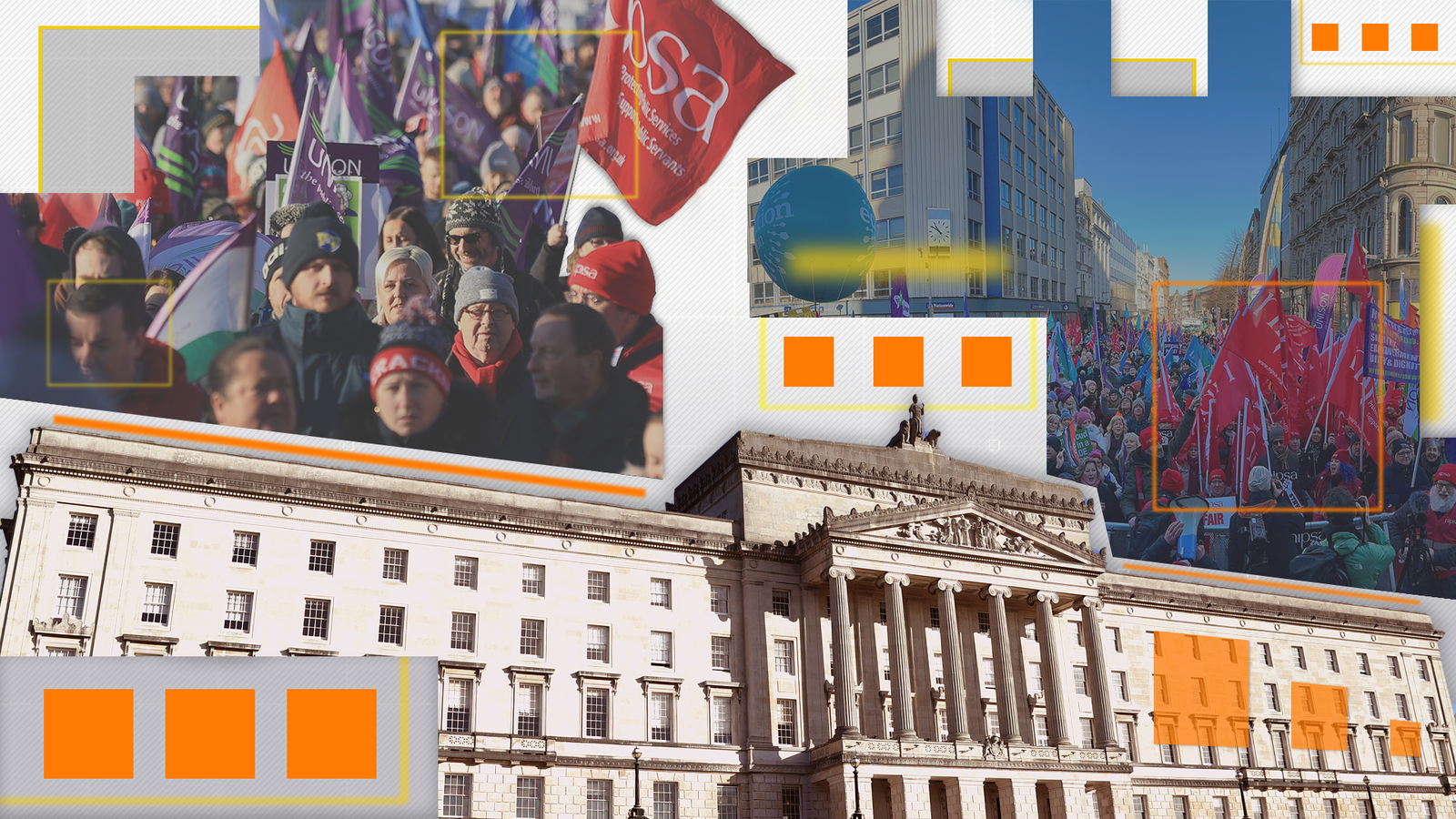
Without political input, many important decisions on budgets and public sector pay have been impossible to pass.
Successive suspensions at Stormont over the years have contributed to long-term issues in the public sector, with impacts seen across all areas of public services.
But perhaps nowhere more so than in the health and social care sector.
There are over 420,000 people currently waiting for their first consultant-led outpatient appointment following referral, an increase of more than fivefold since 2008.
While some individuals may appear on the list more than once awaiting separate treatments, this is still a huge figure in a population of 1.9 million.
In the latest available figures to the end of September, half of these had been waiting for more than a year to see a consultant, up from 5% in June 2015.
And nearly one in three patients had been waiting for more than two years for their initial consultation, up from 0.1% in September 2015.
Health and Social Care Northern Ireland’s figures are not directly comparable with NHS England, which uses a different measure (from referral to treatment rather than to first appointment).
However, as a broad comparison, while waiting times have also been poor in England in November, only 4.7% had been waiting more than a year to complete their entire treatment journey following initial referral and less than 0.01% for more than two years.
Meadbhba Monaghan, chief executive of the Patient and Client Council (PCC), told Sky News: “The issues facing Health and Social Care (HSC) services in Northern Ireland are significant and varied; they have been building over a long period of time, and will not be fixed overnight.
“Through our work in supporting the public, we can clearly see many people are concerned about how they are communicated with, and how they experience services. This includes the quality of care they are receiving and how long they have to wait to access that care.
“Our physical and mental health is fundamental to our wellbeing, the current pressures on the HSC system and staff will be having a negative impact on individuals and their families.”
What has happened in the political vacuum
The devolved government has been suspended on five other occasions since it first sat in 1999 following the Good Friday peace agreement, with the longest suspension lasting for four-and-a-half years between October 2002 and May 2007.
However, in the context of post-pandemic recovery and an unprecedented cost of living crisis, the recent suspension has been “vastly more difficult”, according to recently retired senior civil servant Andrew McCormick.
The former director general of international relations in the Executive Office and ex-permanent secretary at the Department for the Economy told Sky News: “Civil servants can make some routine decisions to keep things going as best they can, but it’s very limited.
“I know that my former colleagues have found it incredibly, incredibly difficult this last couple of years, with the cost of living and inflation making the situation much more fraught [than the last suspension of 2017-2020].
“It’s been a ridiculous position to be in and a complete abdication of responsibility.”
In the absence of ministers in Stormont, the Westminster parliament can still pass legislation and have taken responsibility for budgets and other ad hoc areas of legislation.
In the past two years, departmental budgets have plateaued despite exceptionally high levels of inflation.
And there has been a vacuum in which civil servants cannot take day-to-day decisions which are political in nature.
This includes coming to public sector pay deals because any commitments would take departments over current budgets.
Public sector pay
Last month saw one of the biggest strikes in Northern Ireland’s history, with an estimated 150,000 public sector workers joining marches and picket lines across the country to demand a resolution to pay disputes.
Median pay for public sector workers in the UK as a whole increased by 20% from £30,540 to £36,708 between 2016 and 2023. In Northern Ireland, pay has increased at a slower rate of 16.1% over the same period from £31,570 to £36,651 and is now below the UK average.
In its latest employee earnings report, the Department for the Economy noted real earnings in the public sector fell by 7.2% in the year to 2023, compared with an increase of 1.4% in the private sector.
Carmel Gates, general secretary of Northern Ireland’s largest public sector union NIPSA, which has around 45,000 members, told Sky News: “Quite frankly, what we are witnessing is haemorrhaging of public servants out of Northern Ireland, either to different parts of these islands where they’re better paid or to further abroad.
“It isn’t just in the last two years that the problems emerge, Northern Ireland has been underfunded for quite a period of time.
“The strikes on 18 September is the most galvanised and unified the trade union movement here has been probably ever and involved almost all public service unions.”
After many years of disruption over Brexit, COVID, the cost of living crisis, and prolonged periods without governance, many are hoping for swift and decisive action from the newly resumed executive in the coming days to stabilise the situation in Northern Ireland.
“When they get back they will need to set a budget very quickly, and that will help a lot in the short term,” says Andrew McCormick.
“They then have to face up to the longer-term issues. Much more needs to be done on stabilising public services.”
The Data and Forensics team is a multi-skilled unit dedicated to providing transparent journalism from Sky News. We gather, analyse and visualise data to tell data-driven stories. We combine traditional reporting skills with advanced analysis of satellite images, social media and other open source information. Through multimedia storytelling we aim to better explain the world while also showing how our journalism is done.












